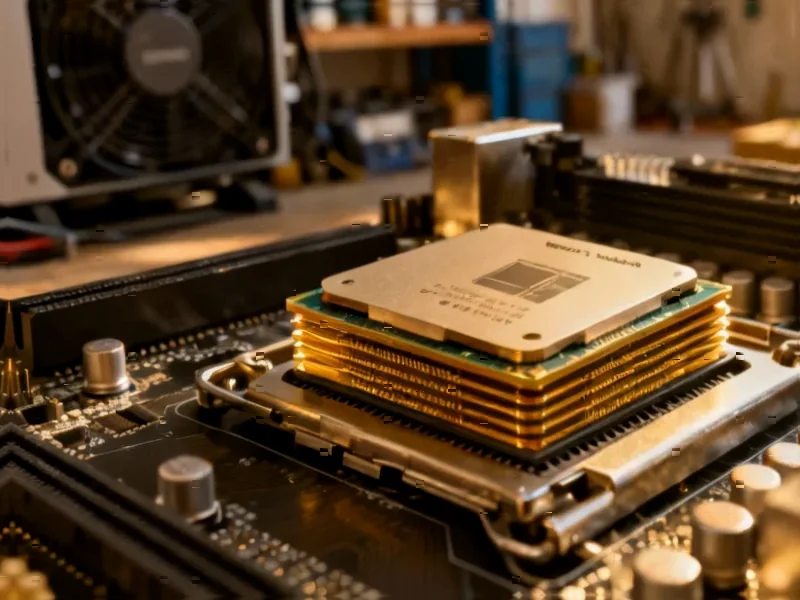According to Wccftech, both Intel and AMD CPUs experienced what Chinese monitoring outlet ChannelGate described as a “sudden burst” of price increases starting in early November, catching the DIY channel off guard. The report indicates Intel’s 12th, 13th, and 14th-generation Raptor Lake processors saw price hikes alongside AMD’s Ryzen 5000 series, with increases ranging from $5 to $20 per unit. The situation has led some top-tier distributors to temporarily suspend shipments, and ChannelGate’s analysis suggests Hong Kong-based traders have been aggressively pushing prices higher. While current-generation Intel Core Ultra 200 and upcoming Ryzen 9000 series appear unaffected, the Ryzen 7000 series may also see noticeable increases given recent 10% price climbs on models like the Ryzen 7600X. This market shift raises important questions about the future of CPU pricing and availability.
The AI Industry’s Unintended Consequences
What we’re witnessing represents a fundamental shift in how semiconductor companies prioritize their production capacity. While the immediate price increases affect consumer CPUs, the underlying driver appears to be manufacturing capacity being redirected toward AI-focused processors. Both Intel and AMD have been aggressively expanding their AI accelerator portfolios, from Intel’s Gaudi series to AMD’s Instinct line. As these companies allocate more wafer starts and packaging capacity to high-margin AI products, traditional CPU production inevitably faces constraints. This isn’t merely a temporary supply disruption but rather a strategic reallocation that reflects where semiconductor companies see their future growth.
The Component Shortage Reality
The mention of component shortages affecting Ryzen 5000 series deserves deeper examination. While these processors are indeed nearing end-of-life, the shortages likely extend beyond just the silicon itself. Modern CPU manufacturing relies on complex supply chains for substrates, packaging materials, and supporting components. Industry monitoring data suggests we’re seeing constraints in advanced packaging capacity, particularly for the chiplet architectures that both companies now employ. As newer generations require more sophisticated packaging technologies, older nodes face reduced priority for essential materials, creating a perfect storm for legacy products.
Consumer Market Transformation Ahead
This pricing dynamic signals a broader transformation in the CPU market that will likely accelerate over the next 12-24 months. We’re moving toward a scenario where previous-generation processors may no longer serve as budget alternatives in the way they historically have. The combination of AI-driven capacity shifts, component shortages, and accelerated product lifecycles means consumers will face tougher choices between current-generation pricing and rapidly disappearing older stock. This could fundamentally alter upgrade cycles and push more users toward platform commitments rather than piecemeal component upgrades.
Strategic Implications for Buyers and Industry
For consumers, this represents a critical inflection point. The traditional wisdom of waiting for price drops on previous-generation hardware may no longer apply. Instead, we’re likely entering an era where timing purchases around product launches becomes increasingly important, with narrower windows for optimal value. For the industry, this pricing pressure creates both challenges and opportunities. While higher margins on remaining inventory provide short-term benefits, the risk of alienating budget-conscious DIY builders is real. Companies may need to reconsider their product lifecycle management strategies and potentially introduce more segmented product lines to maintain market coverage across price points.




